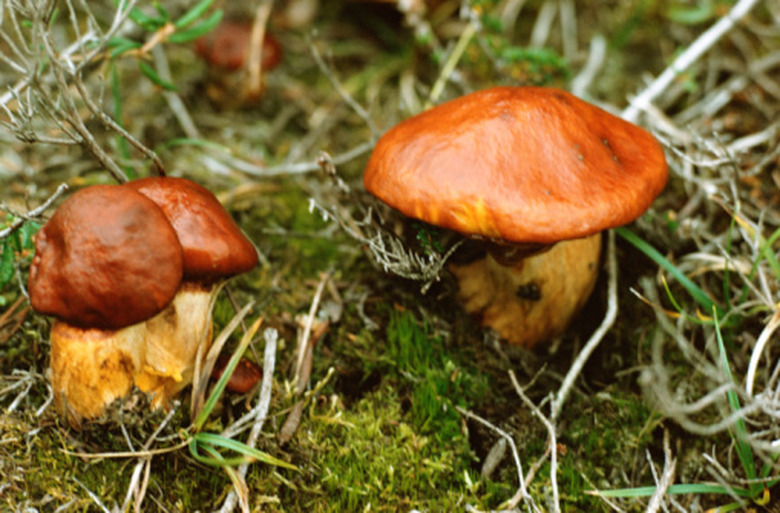How Can I Get Rid Of Mushrooms In My Flower Bed?
Mushrooms are a fungal body that feed on decaying organic matter. They are more prevalent during wet weather, and often appear after a rainfall. Their food source can sometimes be several inches below the soil's surface, making it impossible to remove without destroying your flowers. Fortunately, there are some effective steps you can take to remove current mushroom growth and prevent future growth without damaging your flowers.
Step 1
Pull up the mushrooms in the flower bed by snapping them off at the base. Discard the mushrooms in a garbage bag.
Step 2
Spray a general-purpose fungicide on the spots where the mushrooms were present. Follow the package directions when applying the fungicide. Wait seven days for the fungicide to take affect.
- Mushrooms are a fungal body that feed on decaying organic matter.
- Spray a general-purpose fungicide on the spots where the mushrooms were present.
Step 3
Run a rake over the soil or mulch in your flower bed to increase air circulation. Mushrooms thrive in wet conditions, and increasing air circulation will help dry out the soil or mulch.
Step 4
Insert the sharp edge of a shovel into the soil at a depth of 5 inches in between each of your flower plants. This will further aerate the soil and increase air circulation.
Step 5
Remove any dead or decaying organic matter from the flower bed, including fallen leaves or petals or organic mulch. Replace the mulch with inorganic mulch such as small gravel rocks.
Rid Of Mushrooms
The mushrooms you see are the fruiting body of a hidden, microscopic organism called a mycelium, and removing visible mushrooms is somewhat like picking apples from a tree. In fact, the largest organism in the world is a mycelium that sprouts armillaria ostoyae mushrooms in the forests of eastern Oregon. While destroying an entire mycelium system may not be practical, there are ways to prevent one from sprouting mushrooms in a particular spot, such as your lawn or a musty closet. Mushrooms need two things to grow: moisture and shade. Reduce the frequency and length of watering, and, if you have a drainage problem, correct it by digging drains. You need a fast-release mixture, not a time-release one. Spread it at a rate of 1 pound of actual nitrogen per 1,000 square feet of lawn. It may be from a plumbing leak, a roof leak or a severe lack of ventilation. It will often be visible as a blackened area around the actual mushrooms. After scrubbing, treat the area with a borate-based fungus killer. Unlike bleach, borates will penetrate porous surfaces and kill spores deep within.
- Run a rake over the soil or mulch in your flower bed to increase air circulation.
- After scrubbing, treat the area with a borate-based fungus killer.
- Unlike bleach, borates will penetrate porous surfaces and kill spores deep within.
Things Needed
- Garbage bag
- Fungicide
- Rake
- Shovel
- Gravel
